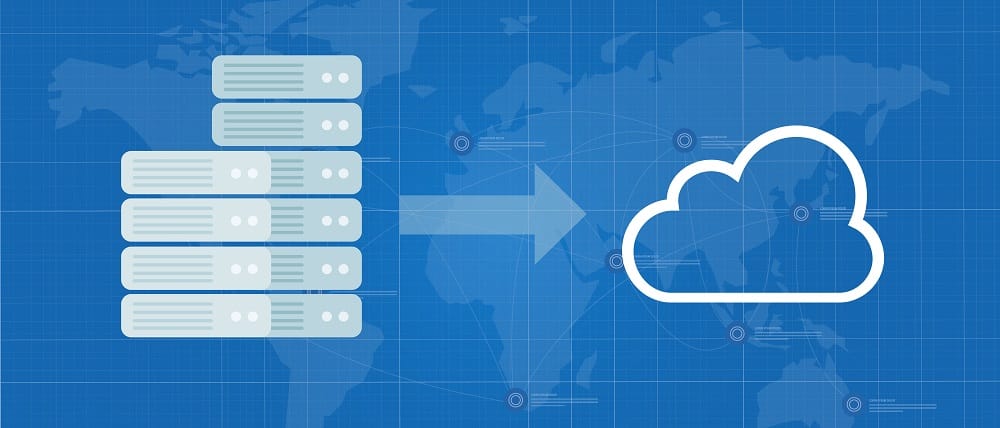A Step-By-Step IT Support Guide To A Successful Cloud Migration
Cloud computing has grown over the past few years and shows no signs of slowing down. It has offered businesses convenient workflow, better data management scalability, automation, and cost-efficiency. Motivated by the advantages of cloud computing, organizations are now trying their best to move their operations to the cloud.
However, cloud migration can be a big problem for businesses. It is because of a lack of proper infrastructure, lack of enough skills, and general skepticism about the security of sensitive data. However, with the right IT support team and resources such as this step-by-step guide, you can have a successful cloud migration and subsequent cloud integration.
Step 1. Define The Scope Of Migration
As you start, assess the application portfolio for the readiness of the cloud. You should know the kind of software you will use, the types of software solutions that will bring value to the cloud, and the variety of applications that don’t add value. While assessing, you should be able to define what to do with each component of your current system; this can be made possible by using a TIME quadrant.
The TIME quadrant contains four parts. First, the tolerate section includes those applications that will not offer you help in attaining your business goals. Secondly, the investment part comprises innovative applications with high business value; however, they need a few adjustments to give maximum value to the business.
Thirdly, the migrate section has high business value applications that don’t need any improvements. And lastly, the eliminate section contains outdated applications that should be deleted.
Being in a position to define the area that each app lies in is very crucial; this step ensures you don’t make any mistakes. If you think you can’t do this yourself, you can hire IT support companies such as BoomTech and others to help define this scope.
Step 2. Choose A Cloud Migration Strategy
The identification of the right migration strategy usually depends on the category of the application that you are using. The migration strategies include the following:
- Re-platforming – In this phase, the developers should make several optimizations to the application without disrupting its core architecture.
- Refactoring – This strategy involves a total remodeling of the solution to create an original cloud version of it. Unfortunately, this strategy is time-consuming and costly as well. The disadvantage, however, should not make you shun away from this strategy as it ensures that there are long-term cost savings. The original cloud applications also allow the companies to adapt quickly to new customer requirements.
- Rehosting – This strategy helps the developers to move on-premises system components to the cloud without the need to change anything.
- Repurchasing – You may apply this strategy when switching from commercially licensed software to a SaaS solution.
- Retiring – This strategy enables you to quit unwanted software solutions.
- Retaining/revisiting – At times, your software has to remain on-premises due to security reasons, regulatory compliance, or even when the need for refractory effort arises. The retaining strategy enables you to revisit the applications that need to be on-premises and check if you can move them to the cloud after some time.
Step 3. Define Migration Success
After choosing a suitable cloud migration strategy, you should be able to establish your plans’ key performance indicators. Defining migration success enables you to measure the extent to which cloud migration can be beneficial in meeting your business goals.
Some key performance indicators you should consider for migration success are as follows:
- The average response time should be shorter to ensure that people get the results from the server without waiting too long and probably losing patience.
- There should also be a small ratio between error requests and total requests.
- Network latency is also crucial as many people are in a hurry when searching for products online. It would be best to choose a server that reduces the delay between the user’s request and the server’s response.
Step 4. Choose A Cloud Environment
Cloud environment refers to systems and processes that act together to provide services. Before deciding on the cloud environment, it is wise to define your chosen cloud model. For example, you may choose between a public cloud and a private cloud depending on whether several customers can share cloud resources or not.
After defining the cloud model, you should move forward and choose a cloud provider. You can decide which environment to choose depending on your business needs. You can choose between infrastructure as a service, software as a service, and platform as a service. Using the TIME quadrant and the migration strategy as your guide is an effective method of settling for a reliable provider and environment.
Step 5. Conduct A Pilot Migration
Like every diver who tests the depths of the waters before diving, you should try the waters before moving to large-scale migration. Conducting a pilot migration shows you the strengths and weaknesses of your migration strategy. You will be able to identify the improvements needed for the smooth running of the large-scale migration.
Pilot migration is done by preparing the cloud platform. You then identify the first adopters, which may include apps and data containing a low workload that is supposed to be migrated. After then, the pilot workload is migrated to the cloud, and performance and latency are measured. You then optimize the processes, platforms, and tools according to your perceptions. After doing so, you will be ready for the large-scale migration.
Step 6. Migrate

After doing all the necessary preparations and improvements in your strategies, it is at this point that you take the last step of moving your users and data to the cloud. The migration stage remains an essential step as it defines your abilities and weakness. If you have failed in any preparation stage, all may be in vain.
At this point in your cloud migration journey, you may seek automation tools to do the heavy lifting associated with your task. It will help you increase the speed of cloud migration, reducing migration risks and downtime and lowering migration costs. Also, research has shown that companies using automation tools are in a position to increase the success rates of their migration process.
Conclusion
Since the migration to the cloud is a complex process, you must consider looking for an IT support provider with solid experience to help prepare and migrate. Once the migration is successful, your business can benefit from it. You can follow the steps discussed above and ensure you’re doing the right thing to move successfully.




























